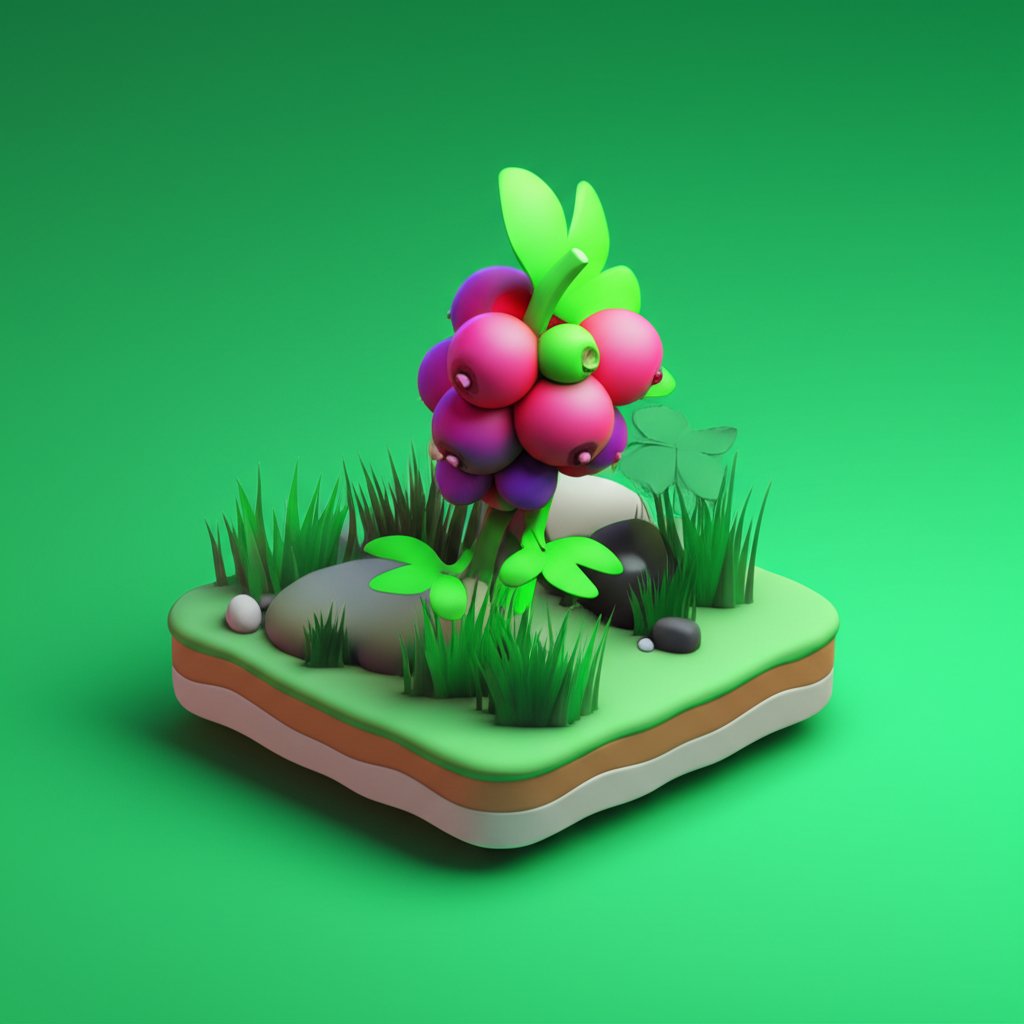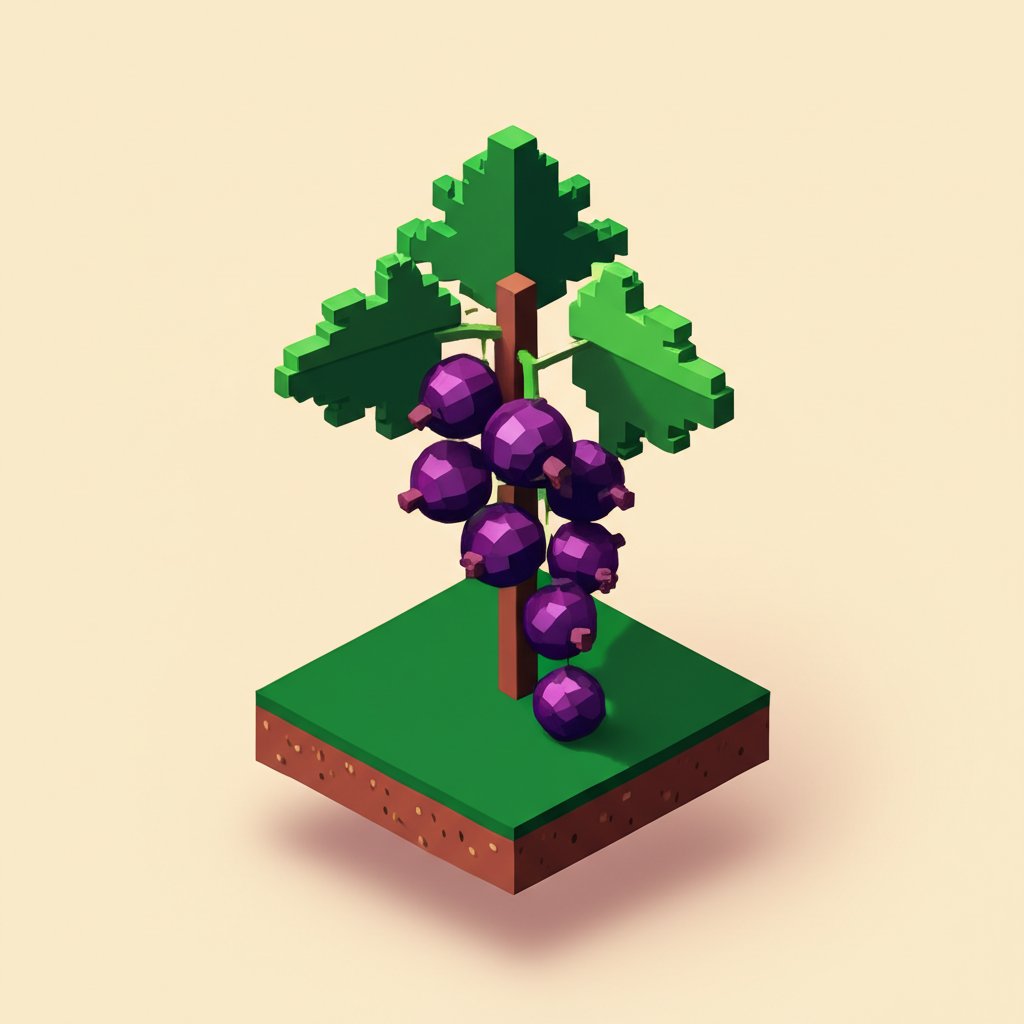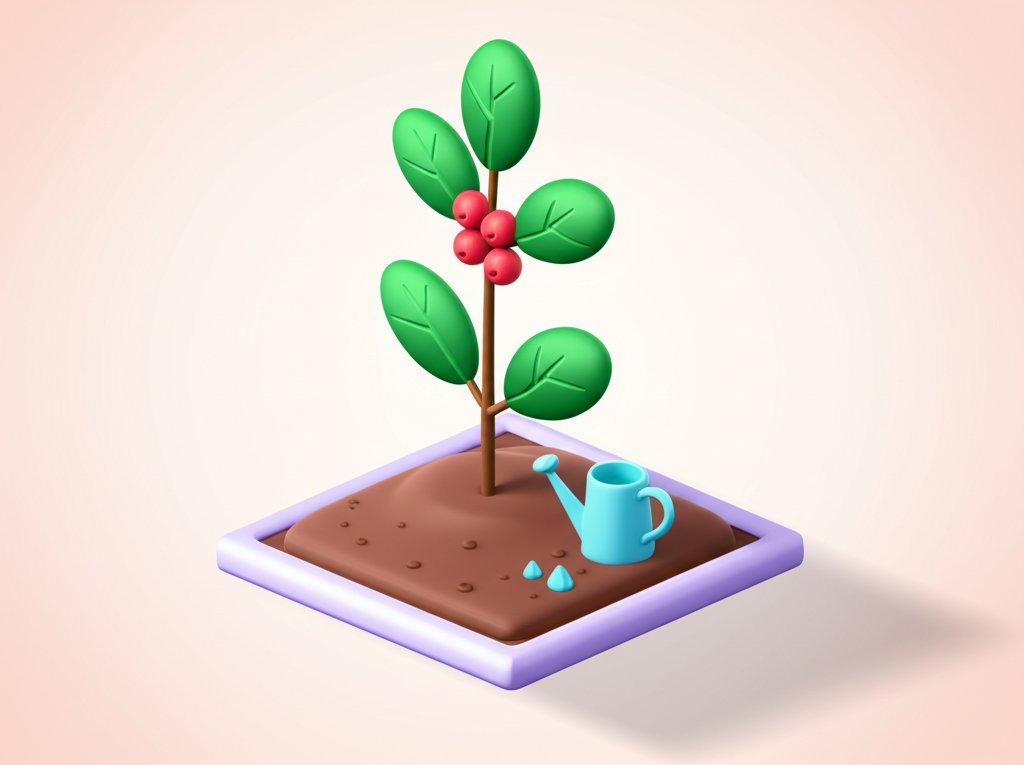Imagine a plant that offers year-round beauty, thrives on neglect, and actively contributes to the local ecosystem – all while being perfectly adapted to harsh, dry conditions. This isn’t a gardener’s fantasy; it’s the reality of Evergreen Ribes, specifically the magnificent Ribes viburnifolium, commonly known as the Evergreen Currant or Catalina Currant. In a world increasingly focused on sustainable, low-water landscaping, this remarkable shrub emerges as a true botanical MVP, ready to transform your garden into a serene, drought-proof haven. Forget fleeting seasonal interest; the Evergreen Currant delivers a consistent performance of lush foliage, subtle fragrance, and vital ecological support, establishing itself as an indispensable choice for the forward-thinking gardener.
What is Evergreen Ribes? Unveiling the Catalina Currant (Ribes viburnifolium)
When we talk about Evergreen Ribes, we are primarily referring to Ribes viburnifolium, a unique and exceptionally resilient member of the currant family. Often overshadowed by its deciduous relatives, this particular species offers a rare combination of perpetual greenery and impressive hardiness, making it a standout selection for diverse landscapes. Understanding its identity, origins, and place in the plant world is the first step to appreciating its full potential.
A Botanical Gem with Many Names
Ribes viburnifolium carries several delightful common names, each hinting at its characteristics or provenance. It is most famously known as the Catalina Currant or Santa Catalina Island Currant, a direct nod to its primary native habitat. Other monikers include Island Gooseberry and, of course, the highly descriptive Evergreen Currant – perfectly capturing its most striking feature. Regardless of the name, this plant is a distinct species within the Grossulariaceae family, which also includes gooseberries and other currants. Unlike many Ribes species, R. viburnifolium maintains its vibrant foliage throughout the year, even in challenging conditions.
Origins and Native Habitat: A Story of Resilience
The captivating Evergreen Ribes calls a very specific and often arid region home: the Channel Islands off the coast of Southern California and the Baja California peninsula in Mexico. Thriving in coastal scrub, canyons, and wooded slopes, Ribes viburnifolium has evolved to withstand the unique pressures of these environments, including prolonged dry spells, salty air, and varying soil compositions. This inherent adaptability is precisely what makes it such a valuable asset for drought-tolerant landscaping in similar Mediterranean climates and beyond. Its resilience is not merely ornamental; it is a profound testament to its evolutionary success in a demanding ecosystem.
Horticultural Significance: Why It Stands Out
In the realm of gardening, the Evergreen Currant holds significant horticultural value. Its ability to maintain lush, glossy foliage year-round provides consistent visual interest, a stark contrast to many plants that shed leaves in winter or dry seasons. This evergreen quality, coupled with its natural resistance to drought once established, positions Ribes viburnifolium as a cornerstone plant for sustainable landscapes. It requires minimal care, making it ideal for busy gardeners or those seeking an eco-conscious approach. Furthermore, its versatility in form and function allows it to fit into various design schemes, from naturalistic groundcovers to elegant border plantings.
The Distinctive Characteristics of the Evergreen Currant
Beyond its evergreen status, Ribes viburnifolium boasts a suite of features that contribute to its charm and utility. From its unique aromatic leaves to its sprawling growth habit, every aspect of this plant tells a story of adaptation and aesthetic appeal.
Year-Round Foliage: Glossy Green Perfection
The most striking feature of the Evergreen Currant is undoubtedly its foliage. The leaves are a rich, dark green, often described as glossy, providing a vibrant, reflective surface that catches the light beautifully. The upper surface is smooth and leathery, while the underside can be slightly lighter, sometimes with a yellowish tint. These leaves are typically 1-3 inches long, with three to five shallow lobes, resembling a miniature maple leaf. Crucially, they persist throughout the year, offering continuous color and texture even when other plants have dwindled. This constant presence ensures that your garden maintains a lively, verdant feel regardless of the season, making the Evergreen Ribes a true foundation plant.
Unique Aromatics: Citrus, Turpentine, or Both?
One of the most intriguing qualities of Ribes viburnifolium is the distinctive scent emitted by its leaves when crushed. This aroma often sparks debate, with some describing it as refreshing and citrusy, while others perceive a more pungent, turpentine-like fragrance. Scientifically, this scent is due to volatile compounds released from glands on the leaves, likely an evolutionary adaptation to deter herbivores or attract specific pollinators. The olfactory experience is subjective but always memorable, adding another layer of sensory delight to this remarkable plant. Brushing against the foliage as you walk by can release a subtle whiff, turning a simple garden stroll into an engaging sensory journey.
Flowers and Fruit: Subtle Beauty and Ecological Value
While not as showy as some ornamental currants, the flowers and fruit of the Evergreen Currant possess their own quiet charm and significant ecological importance. In early spring, typically around April, small, reddish-brown to pinkish flowers emerge in short, erect racemes along the stems. These delicate blooms, while not large, are a vital nectar source for early-season pollinators, including various bees and butterflies. Following the flowers, small, red berries develop. These berries, characteristic of the Ribes genus, are generally not favored for human consumption but are a highly valued food source for local birds and other wildlife, further enhancing the plant’s role in the ecosystem.
Growth Habit and Structure: A Versatile Landscape Solution
Ribes viburnifolium exhibits a distinctive growth habit that makes it incredibly versatile in the landscape. It is a low-growing perennial shrub, typically reaching a height of 3-4 feet but with a much broader spread, often extending 6-12 feet, and in some favorable conditions, even wider. Its growth is characterized by long, horizontally spreading, arching, and often trailing reddish stems. This open, wide-spreading nature allows it to function exceptionally well as a groundcover, effectively stabilizing slopes and preventing erosion. It can also gracefully spill over retaining walls, soften borders, or be used as a unique specimen in larger containers. Its adaptability to various forms makes the Evergreen Ribes a dynamic choice for creative garden design.
Cultivating Evergreen Ribes: A Guide to Thriving Gardens
The beauty of the Evergreen Currant extends beyond its appearance; it lies in its forgiving nature and ease of care. This plant is not demanding, making it a perfect choice for gardeners of all skill levels. With a few key considerations, you can ensure your Ribes viburnifolium thrives and enriches your landscape for years.
Ideal Growing Conditions: Sun, Soil, and Climate
To truly flourish, the Evergreen Ribes appreciates conditions that mimic its native habitat.
Planting Your Catalina Currant: Step-by-Step
Planting the Evergreen Currant is a straightforward process, but proper technique ensures a strong start:
Watering and Fertilization: Embracing Drought Tolerance
The Evergreen Currant is celebrated for its drought tolerance, a feature that becomes evident once the plant is established.
Pruning and Maintenance: Keeping It Lush
Minimal pruning is typically needed for the Evergreen Currant, contributing to its low-maintenance appeal.
Pest and Disease Resistance: A Robust Choice
One of the many benefits of choosing a native plant that is well-suited to its environment is its inherent resistance to common pests and diseases. The Evergreen Currant is generally a very robust and healthy plant. While Ribes species can occasionally be susceptible to issues like currant aphid or powdery mildew in other contexts, Ribes viburnifolium tends to be quite resilient. Its characteristic sticky, aromatic sap likely acts as a natural deterrent to many common garden pests. Maintaining good air circulation through proper spacing and avoiding overhead watering can further minimize any potential fungal issues.
Ecological Impact and Landscape Applications of Ribes viburnifolium
The value of the Evergreen Ribes extends far beyond its aesthetic appeal and ease of care. As a native plant, Ribes viburnifolium plays a crucial role in supporting local ecosystems, making it an excellent choice for ecological gardening. Its versatile growth habit also opens up a myriad of landscape design possibilities.
A Haven for Wildlife: Supporting Biodiversity
In its native habitat, the Evergreen Currant is a valuable asset to local wildlife, providing both shelter and sustenance. Its dense, sprawling foliage offers excellent cover for small birds and mammals, protecting them from predators and harsh weather. The small, reddish flowers are an important early-season food source for native pollinators, including specialist bees and generalist insects like butterflies. Later, the red berries provide a crucial food source for various bird species, helping to sustain them through different seasons. By introducing Evergreen Ribes into your garden, you are actively contributing to local biodiversity, creating a mini-habitat that supports a range of beneficial creatures. Its sticky leaf sap even attracts some beneficial insects while possibly deterring others.
Designing with Evergreen Currant: From Groundcover to Specimen
The distinctive growth habit of Ribes viburnifolium makes it incredibly adaptable for various landscape roles:
Companion Planting: Creating Harmonious Ecosystems
Pairing the Evergreen Currant with other compatible plants enhances its beauty and contributes to a resilient, cohesive garden ecosystem. Focus on combining it with other California native or Mediterranean-climate plants that share similar water and light requirements.
By selecting companions that thrive in similar conditions, you create a low-maintenance, water-wise garden that truly sings.
Xeriscaping Champion: Water-Wise Gardening for the Future
As water conservation becomes increasingly critical in many regions, plants like the Evergreen Ribes are invaluable. Its inherent drought tolerance, particularly once established, makes it a champion for xeriscaping – the practice of landscaping to reduce or eliminate the need for irrigation. Choosing Ribes viburnifolium means significantly reducing your garden’s water footprint, leading to lower utility bills and a more environmentally responsible landscape. This plant demonstrates that water-wise gardening doesn’t mean sacrificing beauty; in fact, it embraces the natural elegance of resilient species.
Beyond the Garden: Emerging Potential and Research

While celebrated for its ornamental and ecological benefits, the Evergreen Currant may hold even more untapped potential, making it a subject of ongoing interest for researchers and enthusiasts alike.
Ethnobotanical Uses and Historical Context
Historically, native plants like Ribes viburnifolium often played a role in the lives of indigenous peoples within their range. While specific extensive traditional uses for the Catalina Currant are not as widely documented as for some other Ribes species, many currants and gooseberries have been utilized for their edible fruits (often cooked) or for various medicinal purposes, such as treating colds or reducing inflammation. The distinctive aroma of R. viburnifolium’s leaves suggests potential insect-repelling properties that could have been observed and utilized. Further ethnobotanical research could uncover more about its historical significance to the native communities of the Channel Islands and Baja California.
Modern Scientific Inquiry: Unlocking New Benefits
The unique chemical compounds responsible for the Evergreen Currant’s aromatic sap and its general hardiness are subjects of modern scientific inquiry. Researchers are exploring if the plant possesses any significant antimicrobial, anti-inflammatory, or antioxidant properties, which could lead to potential medicinal applications. Its remarkable drought tolerance and ability to thrive in poor soils also make it a candidate for studying plant adaptability in changing climates, potentially offering insights into developing more resilient agricultural crops or ornamental species. The study of its ecological interactions, particularly regarding its role in attracting specific pollinators or deterring pests, continues to shed light on its complex contribution to biodiversity.
Embracing the Evergreen Gem: A Versatile Addition

The Evergreen Ribes, or Ribes viburnifolium, is more than just another plant; it’s a testament to the beauty and resilience of nature. From its year-round glossy foliage and unique aromatic leaves to its crucial role in supporting local wildlife, this Evergreen Currant offers a captivating blend of aesthetics, practicality, and ecological responsibility. Its low-maintenance nature, combined with its exceptional drought tolerance, makes it an ideal choice for modern, sustainable gardens, especially in arid and Mediterranean climates.
Whether you’re looking for an effective groundcover, a graceful spiller for a wall, an erosion control solution, or simply a beautiful, ever-present shrub, Ribes viburnifolium delivers. By choosing to cultivate this remarkable native plant, you not only enhance the beauty of your landscape but also contribute to a healthier, more vibrant ecosystem. Discover the enduring charm and effortless elegance of the Evergreen Currant – a true gem for any garden.
Frequently Asked Questions About Evergreen Ribes
Q1: What exactly is “evergreen ribes”?
A1: “Evergreen Ribes” typically refers to Ribes viburnifolium, also known as the Catalina Currant or Evergreen Currant. It’s a species of currant that retains its leaves year-round, unlike most other Ribes species which are deciduous.
Q2: Is the evergreen currant drought-tolerant?
A2: Yes, the Evergreen Currant (Ribes viburnifolium) is highly drought-tolerant once established. Native to the Channel Islands and Baja California, it is perfectly adapted to dry conditions and is an excellent choice for water-wise gardening and xeriscaping.
Q3: What kind of scent do the leaves of Ribes viburnifolium have?
A3: The leaves of the Evergreen Ribes emit a distinctive, often debated scent when crushed. Some describe it as a refreshing, citrusy aroma, while others perceive a more pungent, turpentine-like fragrance. This is due to volatile compounds released from glands on the leaves.
Q4: How big does the Catalina Currant get?
A4: The Catalina Currant is a low-growing, wide-spreading shrub. It typically reaches a height of 3-4 feet, but its stems can spread horizontally 6-12 feet or more, creating a broad, trailing habit.
Q5: Can I grow evergreen ribes in a container?
A5: Yes, its arching and trailing growth habit makes Evergreen Currant a versatile choice for larger containers or raised beds, where its foliage can elegantly spill over the edges. Ensure the container has excellent drainage.
Q6: Does the evergreen currant produce edible fruit?
A6: While Ribes viburnifolium does produce small, red berries, they are generally not considered palatable for human consumption. However, they are a valuable food source for birds and other wildlife, contributing to the local ecosystem.
Q7: What are the best growing conditions for evergreen currant?
A7: The Evergreen Currant thrives in well-drained soil and tolerates a range of light conditions from full sun to partial shade. In hotter climates, partial afternoon shade is beneficial. It is hardy in USDA Zones 8-10.










